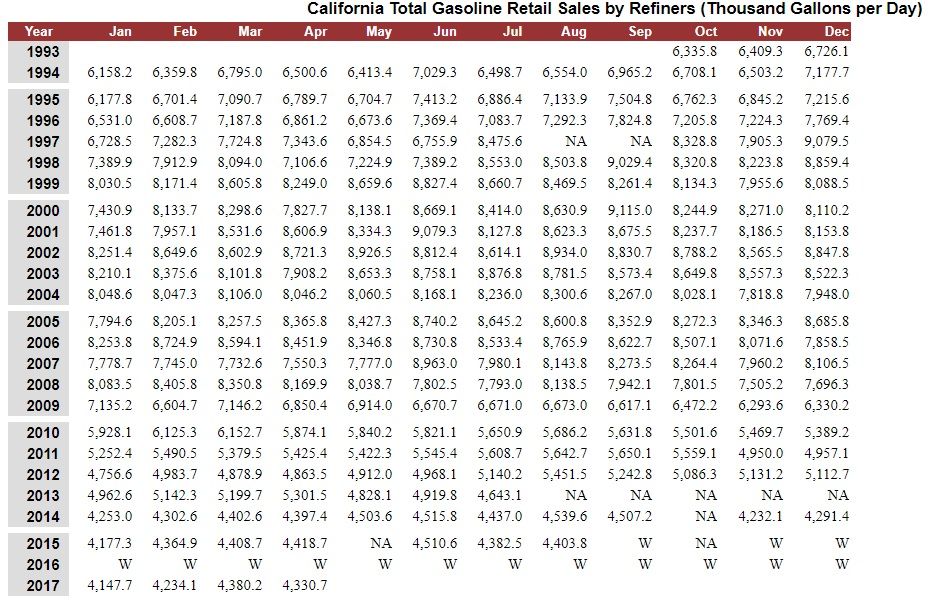Came across an interesting website showing daily California gas usage. Check this out:

Kind of interesting how the peak gas usage was in 2001-2007, then assuming the recession pulled it way down, and it never recovered. Probably related to cars getting better mileage. So we went from a high of ~9,000,000 gallons per day down to April 2017 level of 4,330,000 gallons per day.
Here is a back of the napkin calculation of what a large scale deployment will do to gas consumption here. Assume every Model 3 displaces a car that averages 25MPG. And further assume that Tesla sells 20,000 Model 3's per month starting in December, and 60% are sold in California, so 12,000 Model 3's sold in California per month.
Assume 1,000 miles driven per month per car. The 12,000 Model 3's then drive 12,000,000 miles per month. At 25MPG, the gas to drive those miles would be 480,000 gallons. If there are 30 days in a month, then thats 16,000 gallons per day.
So 16,000 / 4,330,700 = 0.00369. or 0.37% rounded off.
So the expected result of 12,000 Model 3's hitting the road in California in a month is that gas consumption will decline by 0.37% per month every month going forward. If Tesla doubles production to 40,000 cars per month, then the 0.37% gets doubled too to more like 0.64%.
While this isn't a lot, obviously, its something that is going to keep increasing over time. Especially when you consider that others will also start ramping EV production. As the EV ramp continues, the daily gas consumption will fall in sync. There has got to be some way to monetize that
RT

Kind of interesting how the peak gas usage was in 2001-2007, then assuming the recession pulled it way down, and it never recovered. Probably related to cars getting better mileage. So we went from a high of ~9,000,000 gallons per day down to April 2017 level of 4,330,000 gallons per day.
Here is a back of the napkin calculation of what a large scale deployment will do to gas consumption here. Assume every Model 3 displaces a car that averages 25MPG. And further assume that Tesla sells 20,000 Model 3's per month starting in December, and 60% are sold in California, so 12,000 Model 3's sold in California per month.
Assume 1,000 miles driven per month per car. The 12,000 Model 3's then drive 12,000,000 miles per month. At 25MPG, the gas to drive those miles would be 480,000 gallons. If there are 30 days in a month, then thats 16,000 gallons per day.
So 16,000 / 4,330,700 = 0.00369. or 0.37% rounded off.
So the expected result of 12,000 Model 3's hitting the road in California in a month is that gas consumption will decline by 0.37% per month every month going forward. If Tesla doubles production to 40,000 cars per month, then the 0.37% gets doubled too to more like 0.64%.
While this isn't a lot, obviously, its something that is going to keep increasing over time. Especially when you consider that others will also start ramping EV production. As the EV ramp continues, the daily gas consumption will fall in sync. There has got to be some way to monetize that
RT



